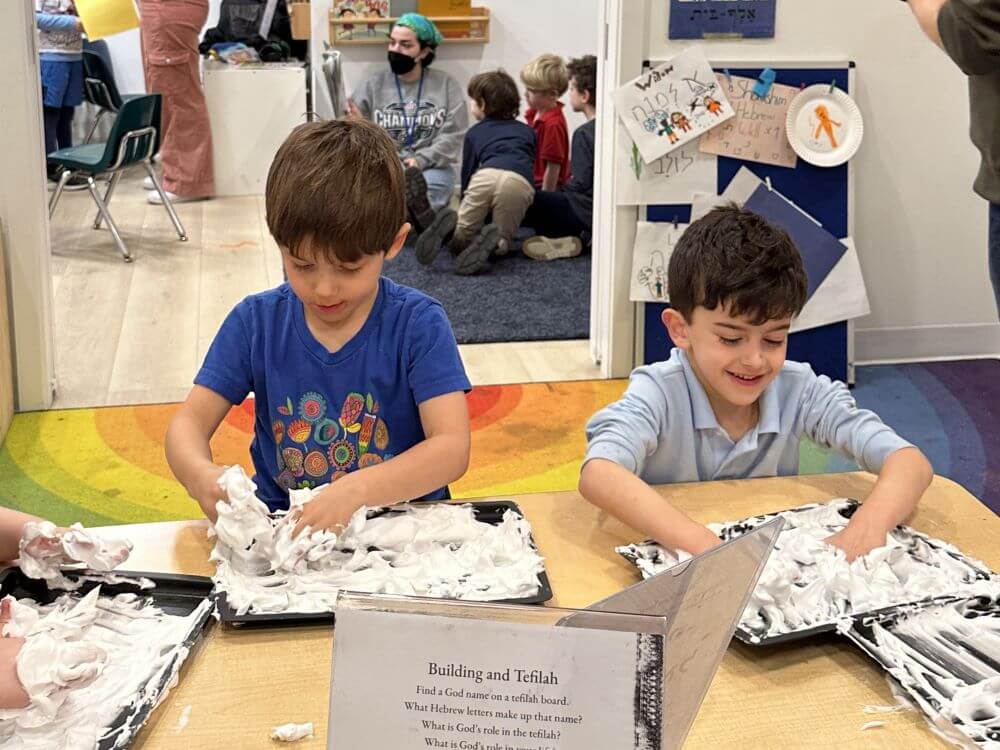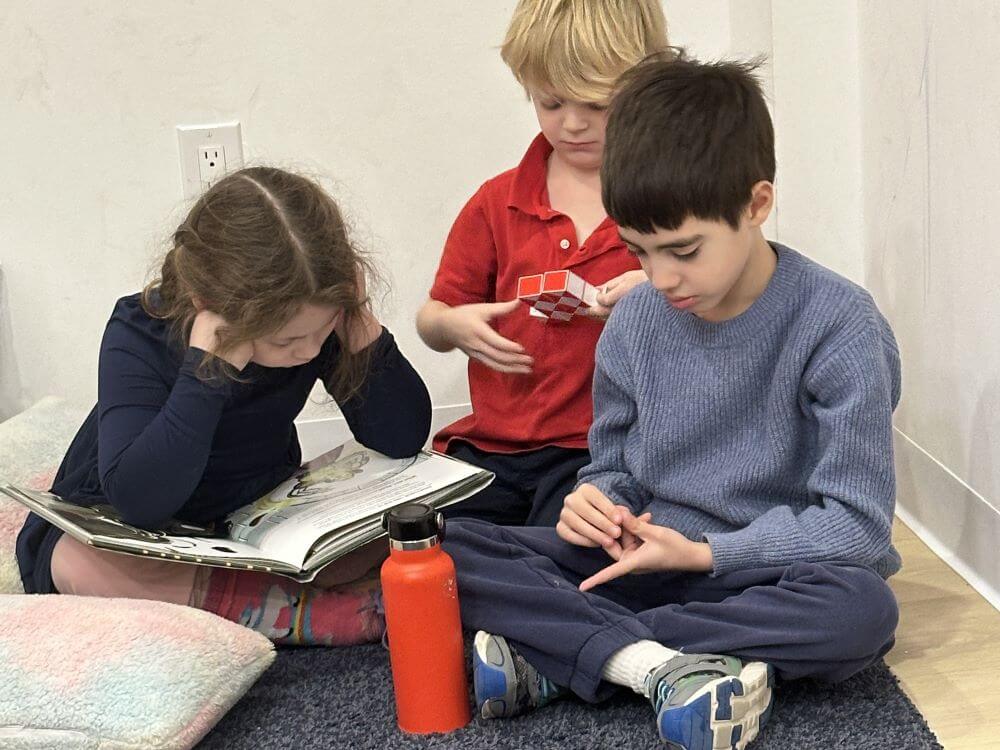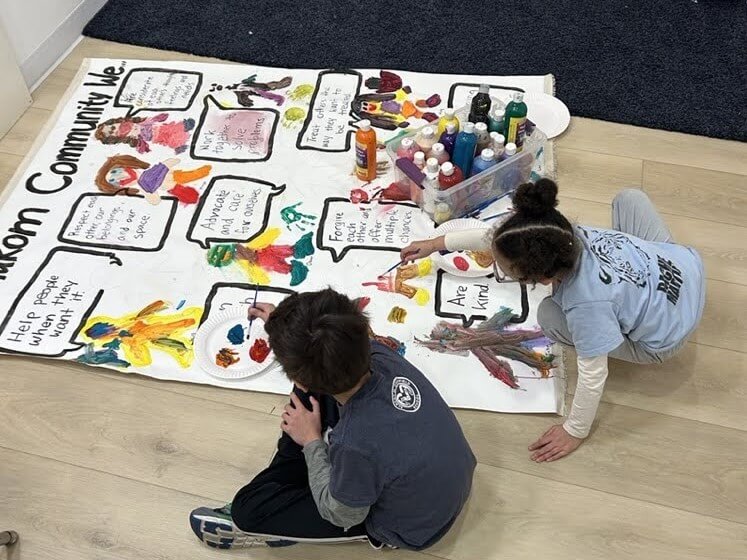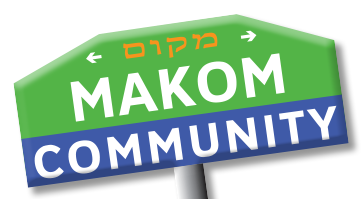
The Garinim (K-1st grade) have been studying the story of Yosef, with all its trials and challenges, while exercising empathy for all the characters involved. When they reached the part of Yosef’s story where his brothers travel to Mitzrayim (Egypt) for rations and reunite with their long-lost brother, the learners had many feelings about how this played out. Educators used this part of the story as an opportunity to explore guilt, accepting consequences, and the peace that comes from conflict resolution.
The Garinim educators introduced the learners to the process of problem-solving through guilt with a story about a boy named Sam. Sam keeps accidentally spilling his water at the dinner table, and after this occurs several times his mom asks him to use a cup with a lid. Embarrassed, Sam is hesitant to agree to this and instead, he collaborates with his mom to come up with a new solution to try instead. Drawing parallels to Sam, when the kiddos read the Yosef text and were able to empathize with the big feelings that Yosef probably experienced when he saw his brothers for the first time again so many years after they’d betrayed him. They deduced that Yosef had good reason for hesitating to tell his brothers his true identity and understood why Yaakov felt the loss of Yosef so deeply. When asked how they earn back trust in their lives, one kiddo reflected that it’s “wise to choose happiness and your friends” over continued distrust. In other words, the learners understood that it is better to work through complicated feelings and rebuild trust with the people they care for and bring them joy than dwell on what went wrong.

In another instance of our kiddos learning empathy from Yosef, the educators asked the learners to consider what had led Yehudah to sacrifice himself to save Binyamin from imprisonment. Was it helpful to sell Yosef into slavery in Mitrayim? Some of the learners felt that even though it was unkind of the brothers to betray Yosef in this way and that it was scary, this needed to happen so that Yosef could be in Mitrayim to help those in need. “[If not] then there wouldn’t have been someone to help the baker, the cup-bearer, [the people of] Mitrayim and the brothers.”
In the end, Yosef reveals himself to his brothers and they all make amends. The learners observed that Yosef had tested them “to see if they were making shalom (peaceful) choices.” Garinim educators introduced the kiddos to various strategies for feeling peaceful instead of anxious. They tried out breathing exercises and listed ways they prefer to calm down. They mentioned:
- Hugging a stuffed animal
- Drawing
- Laying down
- Watching TV
- Listening to music
- Solving math problems
In the end, this part of Yosef’s story allowed learners to consider how best to navigate conflict with others, guilt, consequences, how to make peace with others, and how to find peace within themselves. The Garinim learners showed a lot of wisdom in their empathy towards Yosef, Yaakov, and the brothers during this pivotal moment in their relationships with each other. They understood that trust is paramount and that sometimes unpleasant things happen to make way for good later on. It was a poignant way to wind down this unit on Yosef and justice because learners were able to identify that the ultimate goal of justice is to create peace, whether it be interpersonally or within.

